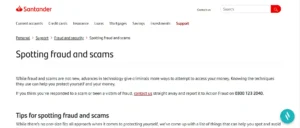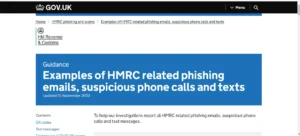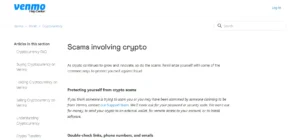Jobsflag Scam Explained – I’ve got some important information to share about a scam involving fake emails from Jobsflag. It’s crucial to stay informed and vigilant to protect yourself from falling victim to this scam.
In this article, I’ll explain how these fake emails work, how to identify red flags in job offers, and the steps you should take if you receive a suspicious email.
Remember, knowledge is power, so let’s dive in and uncover the truth behind these deceptive emails.
Signs of a Jobsflag Scam
As a job seeker, I can identify signs of a Jobsflag scam by paying attention to certain red flags.
When it comes to email scams and job search safety, there are a few key indicators that can help us avoid falling into the trap.
One common sign of a Jobsflag scam is receiving unsolicited emails offering high-paying jobs with minimal qualifications. These emails often contain generic greetings, grammatical errors, and vague job descriptions.
Additionally, scammers may ask for personal information upfront, such as social security numbers or banking details. It’s important to remember that legitimate employers will never ask for sensitive information without a proper hiring process.
How the Fake Emails Work
When it comes to fake emails, scammers employ various phishing techniques to deceive unsuspecting victims. They may use email addresses that appear suspicious or unfamiliar, making it important to be able to identify red flags.
Additionally, scammers often impersonate legitimate companies, making their emails appear legitimate and trustworthy.
Email Phishing Techniques
After receiving a suspicious email, I realized the importance of understanding email phishing techniques and how they work. Email security is crucial in today’s digital age, and being aware of phishing scams is essential for protecting oneself online.
Phishing is a fraudulent practice where cybercriminals impersonate legitimate organizations to trick recipients into providing sensitive information, such as passwords or credit card details. These scammers often use social engineering tactics, like creating urgent situations or offering enticing rewards, to manipulate victims into taking action.
Common phishing techniques include spear phishing, where attackers target specific individuals or organizations, and pharming, which redirects users to fake websites. It’s important to remain vigilant and verify the authenticity of emails, especially when they request personal or financial information.
Regularly updating passwords and using two-factor authentication can also help safeguard against phishing attacks.
Identifying Suspicious Email Addresses
Understanding the characteristics of suspicious email addresses is crucial in detecting and protecting against fake emails. Phishing emails often use deceptive tactics to trick recipients into clicking on malicious links or opening suspicious email attachments.
By being able to identify these suspicious email addresses, individuals can avoid falling victim to scams and protect their personal information.
Here are some common email phishing tactics and how to spot them:
| Suspicious Email Address | Red Flag |
|---|---|
| Misspelled or random characters | Emails from addresses that include misspelled words or random combinations of characters can be a sign of a fake email. |
| Generic email domains | Emails sent from generic email domains such as Gmail or Yahoo, instead of a professional or company-specific domain, may indicate a phishing attempt. |
| Unfamiliar or suspicious domain names | Be cautious of emails coming from unfamiliar or suspicious domain names. Double-check the legitimacy of the sender before interacting with the email. |
Impersonation of Legitimate Companies
I frequently receive fake emails that impersonate legitimate companies and attempt to deceive me into disclosing personal information or clicking on malicious links. These scammers use various impersonation techniques to make their emails appear genuine and trustworthy.
Here are some common tactics they employ:
- Spoofed email addresses: Scammers will create email addresses that mimic those of well-known companies, making it difficult to distinguish between the real and fake emails.
- Phishing links: They’ll include links in the email that direct you to fake websites, designed to look identical to the legitimate company’s site, where they’ll try to collect your personal information.
- Urgency and fear tactics: Scammers often create a sense of urgency or fear in their emails, pressuring recipients to act quickly without thinking rationally.
- Social engineering: They might use personal information obtained from previous data breaches to make their emails more convincing.
Falling for these scams can have serious consequences, including identity theft, financial loss, and compromised personal information. It’s crucial to remain vigilant and cautious when dealing with emails from unknown sources.
Identifying Red Flags in Job Offers
When it comes to job offers, it’s important to be vigilant and look out for red flags.
One red flag to watch out for is if a company asks for payment before you even start working.
Another red flag is a suspicious email domain that doesn’t match the company’s official website.
Lastly, if a job offer seems too good to be true, it’s likely a scam.
Stay alert and trust your instincts when evaluating job opportunities.
Payment Before Work
My employer’s insistence on receiving payment before I even start working raised a major red flag in the job offer. This is a common tactic used by scammers in online job scams to lure unsuspecting individuals into their trap.
Here are some red flags to look out for when it comes to payment before work:
- Upfront fees: Legitimate employers don’t require you to pay any fees or make any payments before you start working. Be wary of any job offer that asks for money upfront.
- Unusual payment methods: If the employer asks you to pay through unconventional methods such as wire transfers or prepaid cards, it’s likely a scam.
- Lack of job details: Scammers often provide vague job descriptions and offer high salaries to entice victims into paying upfront fees.
- Pressure tactics: Scammers may use high-pressure tactics to make you feel like you need to pay immediately or risk losing the job opportunity.
Suspicious Email Domain
Continuing from the previous subtopic, it’s important to be cautious of suspicious email domains when evaluating job offers. In today’s world, email scams and online security threats are on the rise.
Scammers often use fake email domains to deceive unsuspecting job seekers. These domains may look similar to legitimate company email addresses but have slight variations or misspellings.
It’s crucial to carefully examine the email address of the sender before responding or providing any personal information. Legitimate employers usually have their own domain names, such as @companyname.com.
If the email domain seems suspicious or unfamiliar, it’s best to verify the legitimacy of the job offer through other means, such as contacting the company directly or researching their official website.
Being vigilant about email domains can help protect your personal information and prevent falling victim to email scams.
Too Good to Be True?
I have noticed that one common red flag in job offers is when they seem too good to be true. While it’s natural to be optimistic during a job search, it’s important to be cautious and skeptical of opportunities that promise unrealistic benefits or high salaries with minimal effort.
Here are some job search strategies to help you identify potential online job scams:
- Research the company: Look for information about the company’s reputation, history, and legitimacy. Check if they’ve a professional website and valid contact information.
- Evaluate the job requirements: If the job description lacks specific details about the responsibilities and qualifications, it could be a sign of a scam.
- Be wary of upfront fees: Legitimate employers rarely ask for money upfront for job opportunities.
- Trust your instincts: If something feels off or too good to be true, trust your gut and proceed with caution.
Steps to Take If You Receive a Suspicious Email
If you receive a suspicious email, promptly report it to your email provider. They have systems in place to investigate and take appropriate action against scammers.
Reporting scams is crucial in order to protect yourself and others from falling victim to fraud. Here are some steps you can take if you receive a suspicious email:
| Steps to Take if you Receive a Suspicious Email |
|---|
| 1. Do not click on any links or open any attachments in the email. |
| 2. Never provide personal or financial information in response to the email. |
| 3. Mark the email as spam or phishing. |
| 4. Delete the email from your inbox and trash folder. |
Reporting the Scam to Authorities
To efficiently report the Jobsflag scam to the authorities, I recommend providing them with as much information as possible. Here are four important steps to take when reporting scams and contributing to online fraud prevention:
- Document the scam: Keep a record of all emails, messages, or any other communication you have received from the scammer. This will help provide evidence to the authorities.
- Contact local law enforcement: Report the scam to your local police department or law enforcement agency. They may guide you on the next steps to take and can initiate an investigation.
- File a complaint with the Federal Trade Commission (FTC): The FTC is responsible for protecting consumers and preventing fraudulent activities. Visit their website and file a complaint online.
- Notify your bank and credit card company: Inform your bank and credit card company about the scam to protect your finances. They can help monitor your accounts for any suspicious activity.
Protecting Your Personal Information
After documenting the scam and reporting it to the authorities, it’s crucial to take proactive steps towards safeguarding my personal information.
Protecting personal data and maintaining online privacy is essential in today’s digital age.
First and foremost, I’ll strengthen the security of my online accounts by using strong, unique passwords and enabling two-factor authentication whenever possible.
I’ll also be cautious about sharing personal information online, being mindful of what I post on social media platforms and who I share it with.
Additionally, I’ll regularly update my devices’ software and use reputable antivirus and anti-malware software to protect against potential threats.
Lastly, I’ll be vigilant about phishing attempts and suspicious emails, avoiding clicking on unknown links or providing sensitive information without verifying the source.
Tips for Finding Legitimate Job Opportunities Online
When searching for legitimate job opportunities online, I rely on reputable job search platforms. These platforms provide a wide range of job listings from trusted employers. Here are some tips for finding legitimate job opportunities online:
- Research the company: Before applying for a job, take the time to research the company. Look for reviews, news articles, and information about their reputation. This will help you determine if the job posting is genuine.
- Use trusted job search platforms: Stick to well-known job search platforms that have a good reputation. These platforms usually have systems in place to verify job postings and protect users from scams.
- Beware of red flags: Watch out for job postings that promise unrealistic salaries or require upfront payment. Legitimate employers won’t ask for money from applicants.
- Trust your instincts: If a job opportunity seems too good to be true or makes you uncomfortable, trust your instincts and move on.
Also Read
Blakes Breaks Scam Explained – The Dark Side Of Card Collecting
Is Mersetre.Com Legit or a Scam? Mersetre.Com Review
Also Read
Breg Billing Department Scam: Suspicious Texts And Scam Alerts
Is Aaaqqq.Shop Legit or a Scam?: Aaaqqq.shop Red Flags
Also Read














































